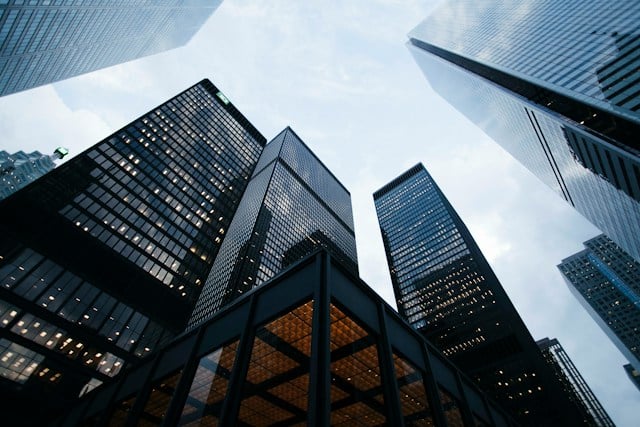How can real estate investments contribute to the circular economy in urban centers?

The Intersection of Circular Economy and Real Estate
The concept of a circular economy is one that is gaining traction across the globe, and it’s one that has the potential to significantly impact the real estate industry. This economic model emphasizes the need for a shift from a linear ‘take-make-waste’ approach to a more sustainable ‘reduce, reuse, recycle’ strategy. If you’re real estate investors, this shift has the potential to affect every facet of your business, from the materials you use to construct new buildings, to the influence you can have on urban centers and the economic drivers within these cities.
Real estate has a significant role to play in promoting the circular economy because of its substantial contribution to waste generation and its intensive use of raw materials. This sector is well-positioned to pioneer new ways of reducing, reusing, and recycling materials, which can have a profound impact on urban centers.
Cela peut vous intéresser : What role does blockchain technology play in enhancing real estate transaction transparency?
A lire aussi : How to optimize the lifecycle of a real estate asset through proactive management?
The Role of Real Estate in Advancing a Circular Economy
In this context, real estate developers are not only investors but also key drivers in the shift towards a sustainable future. They have the capital and the influence to drive changes in how buildings are designed, constructed, and managed. A circular approach to real estate can promote sustainability in several ways.
A lire aussi : How to optimize the lifecycle of a real estate asset through proactive management?
Firstly, embracing a circular model can result in significant waste reduction. Currently, the construction and demolition of buildings contribute immensely to waste generation in cities. By using repurposed or recycled materials in construction, developers can significantly reduce the amount of waste going to landfills.
Cela peut vous intéresser : What role does blockchain technology play in enhancing real estate transaction transparency?
Secondly, a circular approach in real estate can contribute to efficient use of resources. By designing buildings that use energy and water more efficiently, developers can reduce the demand for these resources and limit their environmental impact.
Real Estate Investment and Urban Centers
Urban centers are the heartbeat of the economy, and the real estate industry can contribute significantly to their sustainability. With the increasing trend towards urbanization, cities are under pressure to accommodate growing populations while managing the environmental consequences of this growth.
Real estate investment can contribute significantly to addressing these challenges. For instance, by investing in energy-efficient buildings, developers can contribute to reducing a city’s carbon footprint. Similarly, by investing in buildings that are designed for adaptability and reuse, they can promote resource efficiency and waste reduction.
Beyond these environmental benefits, real estate investment can also drive economic benefits in urban centers. For instance, the construction and operation of energy-efficient buildings can create jobs and stimulate economic activity. In addition, buildings that are designed for flexibility can accommodate a broader range of uses, supporting the diversification and resilience of urban economies.
Manufacturing and the Circular Economy
Turning to the manufacturing sector, the circular economy can open up a whole new realm of possibilities. Instead of discarding waste, manufacturers can view it as a valuable resource that can be reused in future production cycles.
For real estate developers, this means working closely with manufacturers to identify opportunities for the reuse of waste materials. This kind of collaboration can stimulate innovation in the manufacture of building materials, leading to the development of new, more sustainable products.
Manufacturers can also play a role in designing products for disassembly, making it easier to recover and reuse materials at the end of a building’s life. This approach aligns with the principles of the circular economy, where the value of products and materials is maintained for as long as possible.
The Economic Impact of a Circular Economy in Real Estate
The transition to a circular economy can deliver substantial economic benefits for the real estate sector. For one, the efficient use of resources can result in cost savings for developers. For instance, using recycled materials can be more cost-effective than purchasing new ones, especially given increasing raw material prices.
Moreover, buildings that are designed for energy efficiency can deliver long-term savings in terms of reduced energy costs. These savings can enhance the return on investment for developers, making energy-efficient buildings more attractive to investors.
Real estate developers also stand to benefit from the increased demand for green buildings. As awareness of the environmental impact of buildings grows, consumers are increasingly seeking out properties that align with their sustainability values. By investing in green buildings, developers can meet this demand and potentially command a premium for these properties.
In conclusion, real estate investment has a significant role to play in advancing the circular economy, particularly in urban centers. Through thoughtful design, resource efficiency, and collaboration with the manufacturing sector, the real estate sector can contribute to the creation of more sustainable cities. The economic benefits of this transition, from cost savings to increased demand for green buildings, also make a compelling case for the adoption of a circular economy model in the real estate sector.
Impact of Real Estate Strategies on Circular Cities
There’s a growing emphasis on developing circular cities, where reuse and recycling are central to the urban fabric. Real estate plays a crucial role in realizing this vision, as it shapes the physical environment and influences resource consumption patterns.
In a circular city, buildings are designed to be adaptable, allowing them to be easily repurposed or refurbished to meet changing needs. This minimizes the need for demolition and new construction, thereby reducing waste and conserving resources. Furthermore, buildings can be designed to function as material banks, where the building materials are viewed as assets that can be recovered and reused at the end of the building’s life.
Real estate strategies can also promote decentralization of resources. For instance, buildings can be designed to generate renewable energy, capture and recycle water, or grow food. This reduces the need for extensive transportation and infrastructure, further conserving resources and reducing environmental impact.
Another area where real estate can significantly contribute is in promoting shared use of space. Spaces such as offices, homes, and parks can all be designed to be multifunctional, thereby maximizing their utilization. This can reduce the demand for new construction, further reducing environmental impact and contributing to circular cities.
Barriers and Solutions to a Circular Model in Real Estate
Despite the numerous advantages, the transition to a circular model in real estate has its challenges. Some of these challenges include upfront costs, regulatory barriers, and a lack of awareness and knowledge on the benefits of the circular model.
Addressing these barriers will require concerted efforts from all stakeholders. Governments can play a pivotal role by setting policies that encourage circularity in real estate. These can include regulations that encourage resource efficiency, waste reduction, and biodiversity protection. Additionally, governments can provide incentives to spur investment in circular buildings.
Moreover, educational initiatives can help raise awareness on the environmental and economic benefits of the transition to a circular model. Real estate professionals, including architects, engineers, contractors, and investors, need to be educated on the principles of the circular economy and how to apply them in their work.
Collaboration is another key to overcoming these barriers. Real estate professionals need to collaborate with manufacturers, waste management companies, and other stakeholders in the circular economy to identify opportunities and develop innovative solutions.
Conclusion
Embracing the concept of the circular economy in the real estate industry offers a promising way to address environmental challenges, such as climate change, waste pollution, and biodiversity loss, particularly in urban centers. It allows for a more efficient use of resources, reduction of waste, and the creation of buildings that can adapt to changing needs and uses.
However, several barriers need to be addressed to promote the transition to a circular model in real estate. These include regulatory constraints, lack of awareness and understanding, and the need for collaboration across various stakeholders.
In spite of these challenges, the potential benefits of adopting this model are immense. Not only can it result in significant environmental benefits, but it can also offer economic advantages for real estate investors, such as cost savings and increased demand for green buildings.
In essence, the circular economy represents a new way of thinking about how we design, build, and use our buildings. It’s about thinking beyond the immediate needs and considering the long-term consequences of our decisions on the environment and future generations. It’s about building not just for today, but for tomorrow. And as real estate developers and investors, it is our responsibility to lead this transition towards a more sustainable and resilient future.
